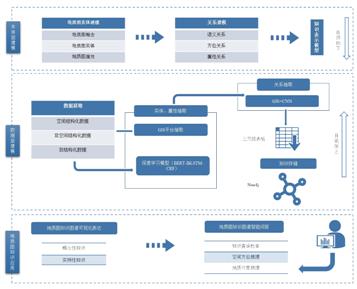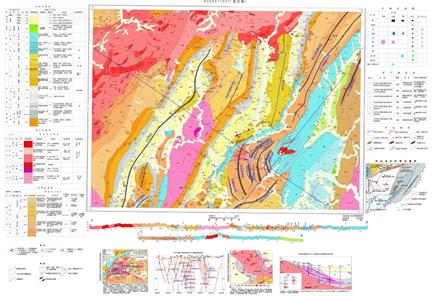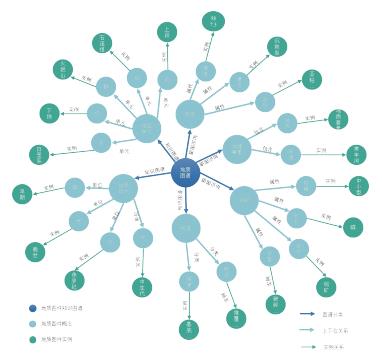| 面向地质图的知识图谱构建及智能问答应用 |
| |
| 引用本文: | 段雨希, 邱芹军, 田苗, 马凯, 谢忠, 陶留锋, 刘俊杰. 2024. 面向地质图的知识图谱构建及智能问答应用. 地质科学, 59(2): 588-602. doi: 10.12017/dzkx.2024.041 |
| |
| 作者姓名: | 段雨希 邱芹军 田苗 马凯 谢忠 陶留锋 刘俊杰 |
| |
| 作者单位: | 1.国家地理信息系统工程技术研究中心 武汉 430074;地理信息系统国家地方联合工程实验室 武汉 430074;2.中国地质大学(武汉)计算机与信息学院 武汉 430074;地理信息系统国家地方联合工程实验室 武汉 430074;中国地质大学(武汉)地质探测与评估教育部重点实验室 武汉 430074;3.中国地质大学(武汉)地质探测与评估教育部重点实验室 武汉 430074;4.三峡大学,计算机与信息学院 湖北宜昌 430002;湖北省水电工程智能视觉监测重点实验室 湖北宜昌 443002;5.中国地质大学(武汉)计算机与信息学院 武汉 430074;地理信息系统国家地方联合工程实验室 武汉 430074 |
| |
| 基金项目: | 国家自然科学基金项目(编号:42301492)、国家重点研发计划项目(编号:2022YFB3904200,2022YFF0711601)、湖北省自然科学基金项目(编号:2022CFB640)和地质探测与评估教育部重点实验室主任基金项目(编号:GLAB2023ZR01)资助 |
| |
| 摘 要: | 
海量地质图件蕴含着丰富的地学基础知识及专家经验知识。地质图主要表达了通过区域地质调查、矿产地质调查所获取的地球表面的地质知识(如地层单元、岩体、断裂等)。如何快速地从矢量地质图件中抽取地质知识并形成知识服务是目前地学知识图谱及知识服务研究的前沿。
由于传统的地质图知识抽取主要依赖人工方式进行综合分析,本文聚焦于矢量地质图件知识表达与抽取研究,提出了一种地质图知识表达框架,提取地质图中所包含的地质实体及关系,将地质图信息以知识图谱的形式表达,并开展了基于地质矢量知识图谱的智能问答应用。最后以江西省于都县银坑幅矢量数据集为例开展实验验证分析,结果表明,本文方法能够较为全面地获取地质图中各个地质对象的信息,提高了地质图语义表达的效果,同时也可以提高地质学习人员对地质图的理解和认识,让计算机能够大规模获取地质图的知识内容。

|
| 关 键 词: | 地质图知识表达模型 地质知识图谱 地质矢量图件 智能问答 空间认知 |
| 收稿时间: | 2023-08-19 |
| 修稿时间: | 2023-12-02 |
| 本文献已被 万方数据 等数据库收录! |
| 点击此处可从《地质科学》浏览原始摘要信息 |
|
点击此处可从《地质科学》下载免费的PDF全文 |
|



